Now is a good time though to see how all that water is moving around the property. There's no better place to start than the new swale I was digging recently, near the bush orchard. But first, lets take a trip back to 2013, when I proposed my initial plan for swales in this area...
The plan
Back in 2013, I wrote about the progress on the lower of the two swales, just within view of the picture above. It was a nice start, but recently I decided to expand the lower swale and start the upper one. I wasn't going to write about it until I had at lease ONE of the two, finished.
However, the recent rain has shown me how effective, even these half finished swales are. Here is the upper swale...
Newly dug, upper swale
It's completely full now and in stark contrast to the lower swale. Please excuse the grey-water hose below...
Expanded, lower swale
The reason the upper swale is full in comparison, is because the water coming off the concrete slab we initially laid for the driveway, is filling it. The location of the upper swale is positioned such as to catch this trickle of water, high on the slope.
Concrete driveway, right.
Depending how heavy the rain is, the water gradually sheds onto the grass and trickles down into the newly dug swale.
Catching water
The water is entering just above the swale, where there is no grass. That's where I was digging recently, and actually wanted to know if the water would indeed follow this path. It seems the theory is sound in practice.
Upper and lower swales
The beauty is, these two swales will be joined at some point, so when the upper swale fills to capacity, it will flow into the lower swale. It's amazing to see that small trickle of water from the driveway, can actually be caught and stored in such a way.
The design of the driveway, may have started with a concrete slab, but I'm glad we decided to finish the driveway to the bottom, with concrete grid pavers instead.
Stopping the water down slope
You can see the cells are filling with water, but not making the water run. Some of the cells overflow into the lower ones, but we certainly don't get the kind of water shed we get from the concrete slab above the grids.
It has meant the water which collects at the bottom of the driveway, is lessened to such a degree, we don't have big mud puddles. Those particular delicacies are reserved for other parts of the property now, just not at the bottom of the driveway so much!
It's good to see some of our ideas in water management, actually work in practice.
PS: Do any of the locals know where I can find a Davidson Plum tree, to collect seed from? I would like to replace the ones which died in the Bush Orchard.

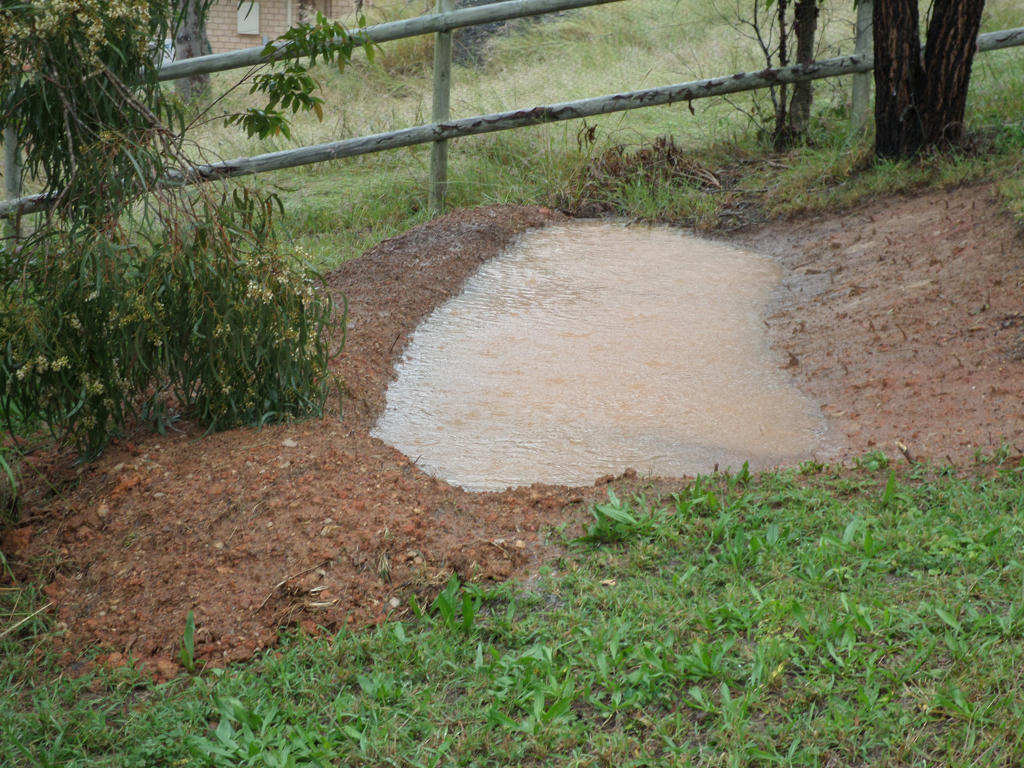
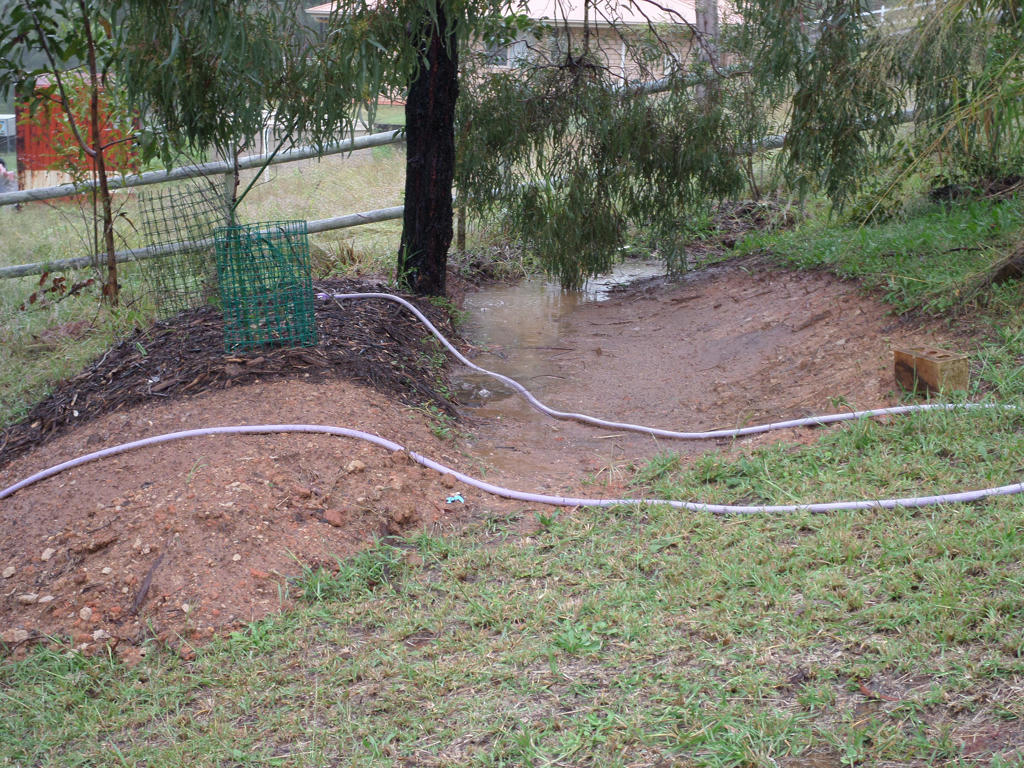
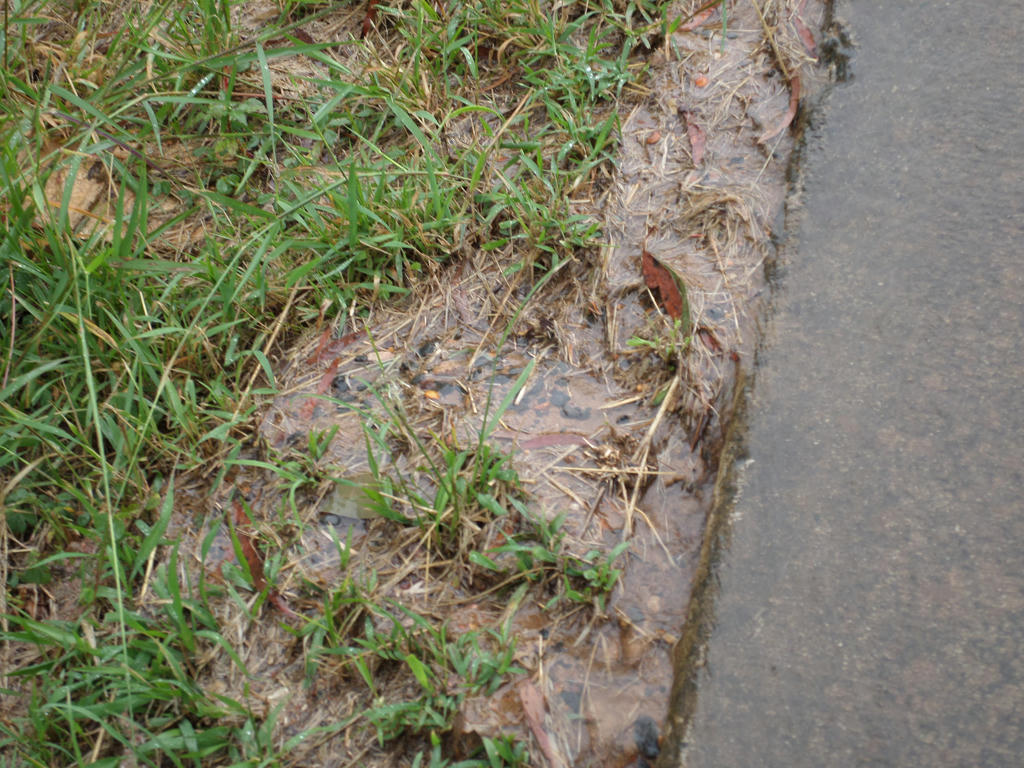
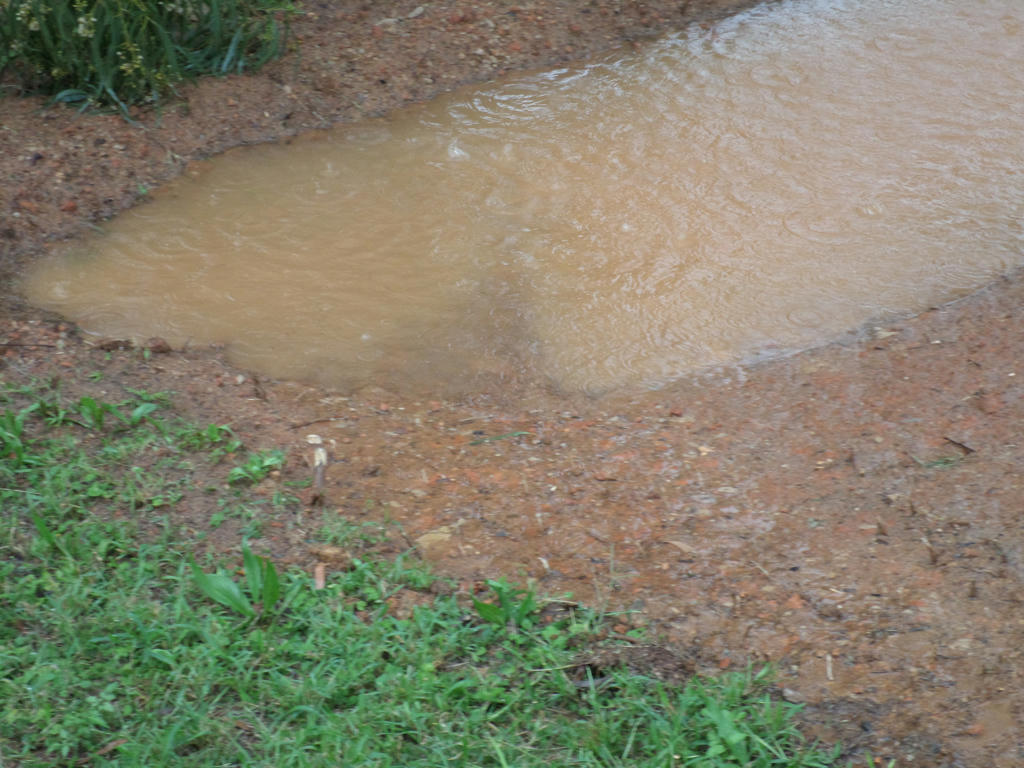
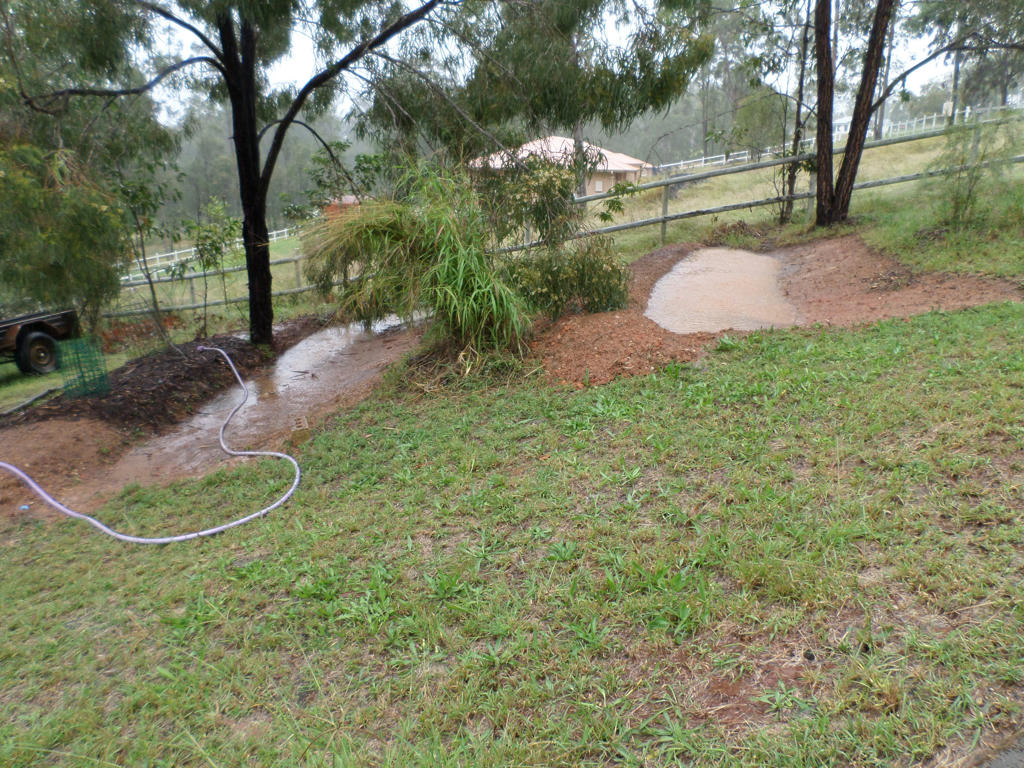
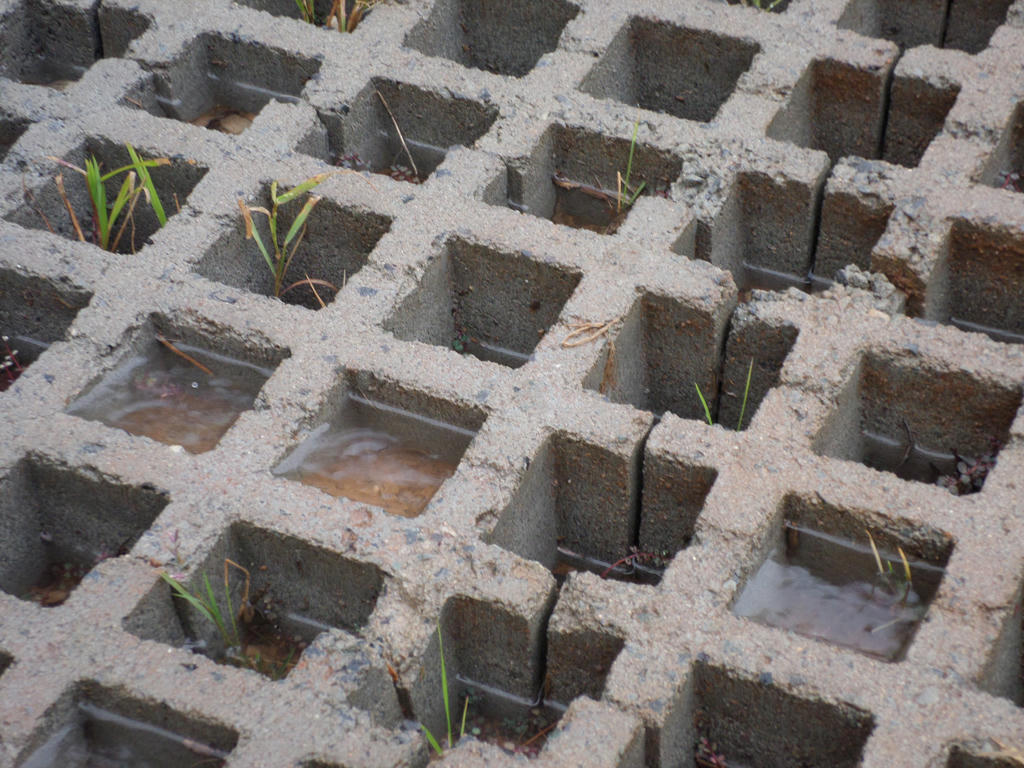
Thanks Chris! I love to see Swales in action! There's so much more we need to do on our property to slow the water as it runs down the hill but your post gives me hope that we CAN do it. Well done.
ReplyDeleteThanks purplepear and Linda. I can certainly appreciate the need to slow down the flow Linda, and its difficult to find swales on slopes which isn't part of a bigger project involving machinery and/or hoards of happy contributors moving dirt by hand. When its just you, life, a pick and a shovel, it seems somewhat daunting to try.
ReplyDeleteI recommend, starting with a small area - you can always work from a bigger design in mind, but begin in a small area you can experiment with first. That's why I started with the lowest swale, as it was at the lowest part of the slope. I wanted to learn from that exercise, before cutting higher up. It seems to take me years to get a swale dug, but I'm using what time is available and observing how my cutting into the landscape effects the natural forces around it. I think this has the potential to create a more sensitive design.
I can tell you my technique of digging the second swale, differed to the first. By the second time I had learned to consider the high and low point of the slope (at the same time) to determine where I started digging. I also had to be more sensitive to the deepness of the swale, in relation to the driveway (higher up the slope) as I didn't want to compromise the soil supporting the surcharge of the concrete and traffic.
I know that sounds complicated in theory, but its much easier to learn in practice. Which is why I recommend starting in a non-sensitive area first, at the lowest point of the slope, that's if you're planning several swales up the slope. It minimises risks in the learning process. :)
Anyway, good luck with your own process, and I would love to read anything you try on your blog. Swales have great potential, if they are designed with sensitivity of the environment they are placed in.
Its wonderful to see things like this in action. I love the idea of the concrete grid pavers which I already said back when you and David worked on your driveway. For years, my husband has been digging out a passage for water to drain down to the garden rather than stagnate by the house. It works but I can't tell you how many times I have twisted my ankle while walking the dog. This is a post he is going to have to see-we may not need swales but we do need to move water.
ReplyDeleteIt sounds like a tricky spot you're dealing with. I have a plan to use these pavers where we intend to park the car, but because its near the house, I don't want water sitting there near the footings. So I can empathise with this situation. In that location though, I'm planning to have a small ag-pipe under the pavers to drain the water further away from the house.
DeleteBut I've seen these pavers used in creek crossings and apparently they keep well and get people's feet out of the water. So long as you don't get a torrent of water that is.
I like your idea-I think that is what would work and the pavers could go on top to keep the cars from both killing the ag pipe and from killing our tires. Garry keeps having to dig the ditch out so this would ultimately save a lot of work for him.
DeleteIt will definitely save work in the long run. We used to have to cart dirt back up our driveway 3-4 times a year, because it would wash down. Not any more. I can sympathise with Garry's plight.
ReplyDeleteI showed him your post and the one with the driveway-said you did beautiful work but he thinks its not an answer here though I have no idea what is. But we have to do something more permanent some day.
DeleteWe lived with our driveway for six years, lol. Best to do what works in your situation. We don't have to deal with an annual thaw, so maybe these grids wouldn't handle the soil heaving and end up wonky? If you had to straighten them every year, maybe another solution would be best.
Delete